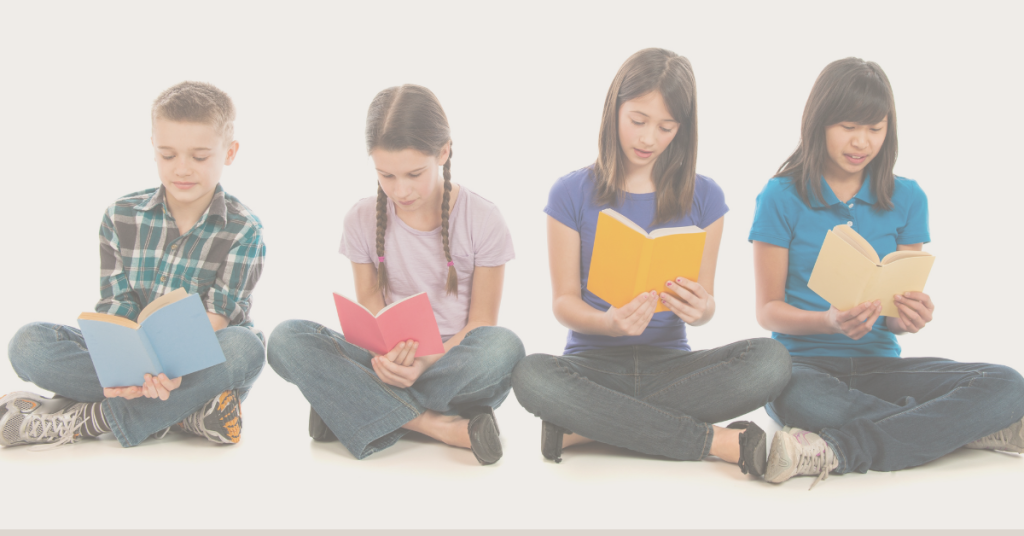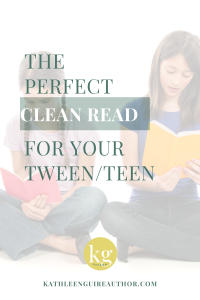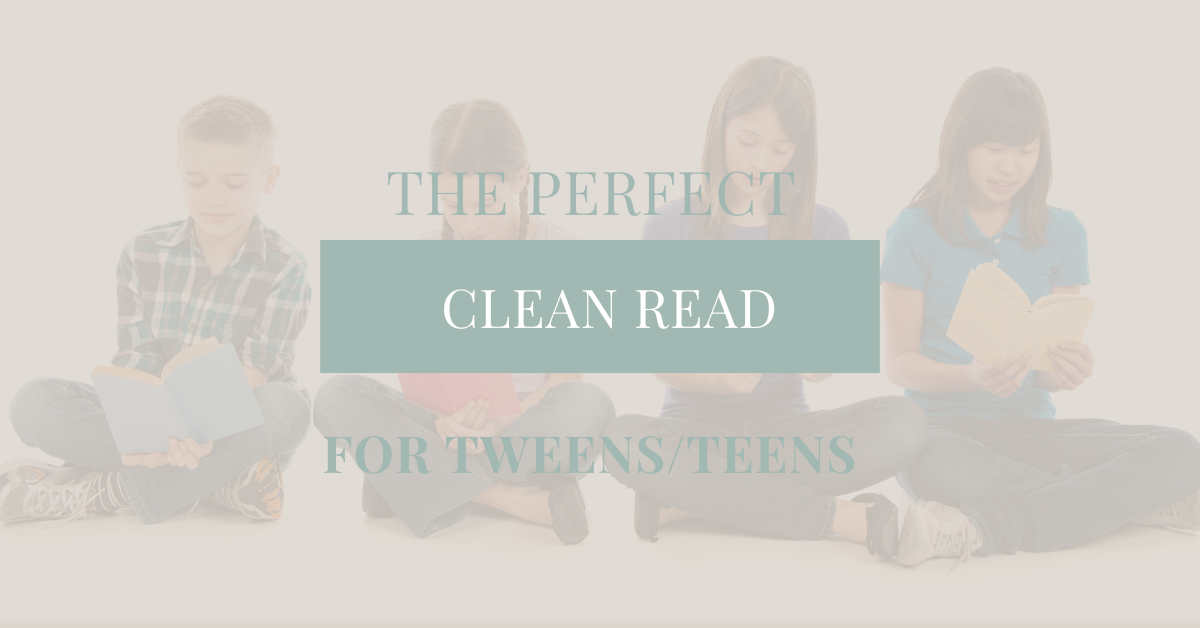Three Tips For Finding The Perfect Clean Read for Tweens/Teens
Finding the perfect clean read
As a Christian mother of seven (and grandmother to fourteen), I know how difficult it is to find a clean mystery for your tweens. Or a clean book whatsoever. We get stuck wondering things like, maybe we should just follow a suggested reading list and take the advice of others? They can’t be wrong. A few curse words or explicit scenes won’t hurt, will they? But then that gnawing question eats at your gut—how can I teach my kids about the world without all the curse words and explicit scenes? There has to be another way to read books without constantly going against my family’s morals and values. Am I the only parent struggling to find good reads that I don’t have to redact half the words in?
When you’re unsure of where to look, it’s hard to move forward. The good news is, you can easily bring order to the chaos by defining what “clean” means to you and focusing your research on trusted sources.

1.Defining “Clean”
Define what “clean” means to you. Here’s a great starting place:
- Language: Look for books with minimal or no use of strong language (F-bombs and other words – you decide what to accept.
- Content: Ensure there are no graphic scenes, explicit content, or mature themes.
- Moral Values: The book should promote positive messages and ethical behavior.
If you want zero curse words, put that in your definition of clean reads. If you are okay with words such as “hell” and “damn” add those to your acceptable list. I have strong opinions about curse words but that’s me. I think if a work is peppered with curse words, especially the F*bomb then the writer needs a thesaurus. This is an unpopular opinion because it is socially acceptable in many circles to use curse words in normal conversation to replace words like “really” or “very.” I was very upset becomes “I was F*ing upset.” You get the picture. But that’s my opinion and my standard. That doesn’t make it yours. It’s up to you. What is acceptable to you?
If you want no graphic scenes or content that are emotionally taxing for a tween, such as mature themes, put that in your definition. For example, if you don’t want your tween reading open door sex scenes, add that to your definition. If you don’t want your child to read a detailed account of physical abuse, rape, or murder, add those to your list.
Finally, if you want the story to have proper moral value, include that in your definition. Every book has a moral, whether you approve of the moral or not. The moral could be – evil always prevails. Or nothing every works out. Or the worst is always going to happen. Or good triumphs over evil. Having a clear definition helps you know exactly what to look for. Below are some examples of each:
Good Morals
- Honesty and Integrity:
- Example: Characters who tell the truth, even when it’s difficult, and uphold their values despite challenges.
- Impact: Teaches the importance of honesty and maintaining one’s principles.
- Empathy and Compassion:
- Example: Characters who understand and care for others’ feelings, helping those in need.
- Impact: Encourages readers to be considerate and supportive of others.
- Perseverance and Hard Work:
- Example: Characters who face obstacles with determination and work hard to achieve their goals.
- Impact: Shows the value of persistence and effort in overcoming difficulties.
- Friendship and Loyalty:
- Example: Characters who support and stand by their friends through thick and thin.
- Impact: Highlights the importance of being a good friend and valuing relationships.
- Courage and Standing Up for What’s Right:
- Example: Characters who speak out against injustice or stand up for their beliefs, even when it’s risky.
- Impact: Inspires readers to act bravely and ethically.
- Responsibility and Accountability:
- Example: Characters who take responsibility for their actions and learn from their mistakes.
- Impact: Promotes the importance of owning up to one’s actions and learning from them.
Bad Morals
- Dishonesty and Deception:
- Example: Characters who lie, cheat, or deceive others without facing consequences.
- Impact: Can normalize dishonesty and undermine the value of truthfulness.
- Bullying and Intolerance:
- Example: Characters who are mean, discriminatory, or intolerant towards others without repercussions.
- Impact: May perpetuate negative behavior and promote harmful stereotypes.
- Self-Centeredness and Lack of Empathy:
- Example: Characters who are solely focused on their own needs and disregard others’ feelings.
- Impact: Can discourage empathy and promote selfish behavior.
- Unrealistic or Harmful Solutions:
- Example: Characters who solve problems through violence, revenge, or unethical means.
- Impact: Might teach readers that inappropriate actions are acceptable solutions to problems.
- Encouraging Negative Stereotypes:
- Example: Characters or situations that reinforce stereotypes about certain groups or individuals.
- Impact: Can perpetuate prejudice and discourage diversity and inclusion.
- Avoidance of Consequences:
- Example: Characters who face no real consequences for their negative actions or decisions.
- Impact: Might imply that actions have no real repercussions, diminishing the importance of accountability.
2. Use Research and Recommendations for Clean Reads
To find clean mystery books for tweens efficiently, focus your research on trusted sources that align with your definition of “clean.” Here’s how:
- Seek Recommendations: Look for lists, reviews, and recommendations from trusted sources, including Christian book blogs and family-oriented review sites.
This is crucial because looking on the shelves of the bookstore or taking general recommendations from others can leave you with a stack of unsuitable books. The key is to go in armed with your definition of clean and some research before you open the door to the bookstore or library.
Here are a few sites to help you:
- Plugged In by Focus on the Family: Reviews books, movies, and more from a Christian perspective, providing insights into content suitability.
- Common Sense Media: Offers comprehensive reviews on books with detailed content breakdowns, ensuring you can verify language, themes, and suitability.
Read Reviews and Synopses to find Clean Reads
- Check Reviews: Look for reviews from parents, educators, or religious communities that highlight the book’s suitability.
- Read Synopses: The book’s synopsis or blurb can give you a good idea of the content and themes.
Reviews are available on Amazon, Goodreads, and other booksellers. Read these but also take them with a grain of salt. Just because a book got a five-star review doesn’t mean it fits your definition of clean.
3. Create a Booklist of Clean Reads
If you’ve spent hours searching for clean mysteries for your tween but something still feels off—like you’re not getting results—this is likely the piece that’s missing. A useful technique for filling your shelves with clean reads is to start a book list based on the research, recommendations, and reviews you have gathered.
A book list is simply a list of books you want your kiddos to read. If you know what your tween is going to read next, you don’t need to stress. You’ve done the work ahead of time.
I have a short one my family created that you can download!

Favorite Books
I’ve compiled a short list of eighteen books my family loves!
While many of them do not contain the “Christian” label, they are full of value. Not only that, they aren’t full of expletives and graphic scenes.
I homeschooled my kiddos for over two decades and we used a literature-rich curriculum, Sonlight, which included reading lists. I recommend you look at their site even if you don’t homeschool.
Here’s where you’ll really compile your clean reads list. Do the first two steps and/or skip ahead and have someone create a list for you such as Sonlight. Of course, this isn’t a perfect solution. You will still need to put each book through your definition of clean filter. But you can also have someone create a list for you. You can start with the list I created just for an idea or jump on over to Read Aloud Revival and they will create one for you.
Conclusion – Find the best clean reads for your tween/teen
Finding clean books for tweens doesn’t have to be an overwhelming task. By defining what “clean” means to you, researching and seeking recommendations from trusted sources, reading reviews and synopses, and creating a tailored book list, you can ensure your child has access to engaging and morally sound literature. Start your journey today with these tips and enjoy the peace of mind that comes with knowing your tweens are reading books that align with your family’s values. Happy reading!
another great article for you:
6 Tips For Teaching Social Media Safety (With A Tween Novel)
pin it:


